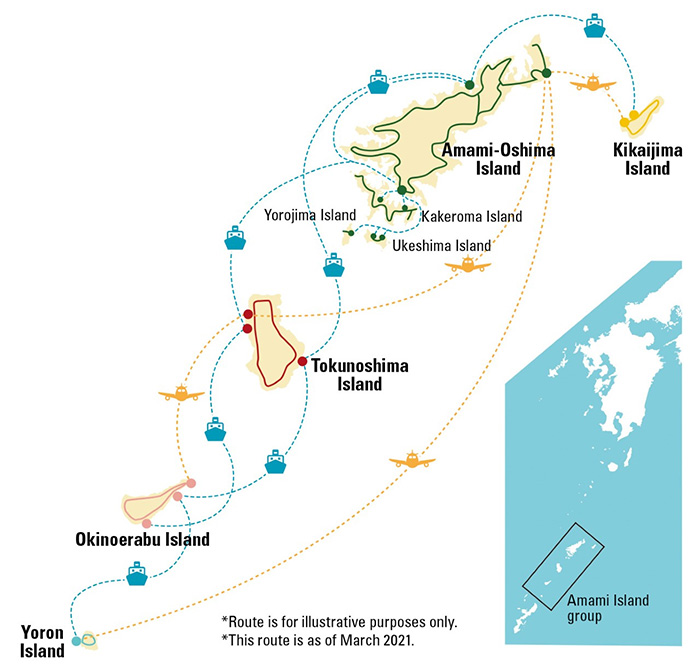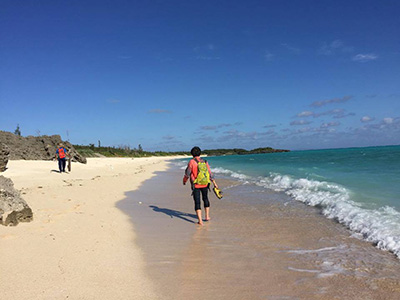Ocean Newsletter
No.511 November 20, 2021
-
Enactment of the Act on Strengthening Maritime Industries and Its Significance
OTSUBO Shinichiro
Former Director-General, Maritime Bureau, Ministry of Land, Infrastructure, Transport and Tourism / Visiting Research Fellow, Japan Transport and Tourism Research Institute / Advisor, Nippon Hakuyohin Kentei Kyokai(The Ship Equipment Inspection Society of Japan)For Japan, securing stable maritime transportation is indispensable for the survival of its society and economy, and is of a highly public nature. However, it is mainly a private-sector enterprise rather than a government-funded service, so effective policies cannot be carried out on the idea of "constructing public facilities using national funds." Here lies the difficulty of industrial policy. The Act on Strengthening Maritime Industries passed by the National Diet in 2021 was a system formulated as the best policy for the present time. -
Transition in Maritime Transport Control and Future Developments
SAMESHIMA Takuya
Instructor, Department of Maritime Police, Japan Coast Guard AcademyA new resolution was announced by IMO in December 2021, laying out the new Vessel Traffic Service (VTS) guideline. The new resolution represents a large change to past content, and we are just now approaching a transitional period in maritime transport control for ensuring the safety of vessel traffic. This article tracks transitions in how VTS has come to be understood and defined, as well as introduces the main changes in the guideline as it develops in the future. -
The Natural World Heritage Site Amami Trail
IWAMOTO Chizuru
Councilor, Amami World Natural Heritage Office, Nature Conservation Division, Environment and Forestry Affairs Department, Kagoshima Prefectural GovernmentIn July 2021, Amami-Oshima Island and Tokunoshima Island were at last designated as Natural World Heritage sites. In the Amami Island group where these two islands are located, there is a long-distance nature walking trail called the Amami Natural World Heritage Trail where one can stroll through and enjoy the nature and culture of eight inhabited islands.
Amami Trail is aiming for conservation of the natural environment, the preservation and the passing on of environmental culture, and revitalization of the community, while also going forward with plans for sustainable tourism.
The Natural World Heritage Site Amami Trail
[KEYWORDS] Amami Islands / long-distance nature trails / regional attractionsIWAMOTO Chizuru
Councilor, Amami World Natural Heritage Office, Nature Conservation Division, Environment and Forestry Affairs Department, Kagoshima Prefectural Government
In July 2021, Amami-Oshima Island and Tokunoshima Island were at last designated as Natural World Heritage sites. In the Amami Island group where these two islands are located, there is a long-distance nature walking trail called the Amami Natural World Heritage Trail where one can stroll through and enjoy the nature and culture of eight inhabited islands.
Amami Trail is aiming for conservation of the natural environment, the preservation and the passing on of environmental culture, and revitalization of the community, while also going forward with plans for sustainable tourism.
Inscription as a World Natural Heritage Site
On July 26, 2021, the 44th session of the World Heritage Committee declared the inscription of four regions that are part of the Nansei Islands, namely Amami-Oshima Island, Tokunoshima Island, the Northern part of Okinawa Island, and Iriomote Island, as World Natural Heritage sites. It has been about 18 years since work began to achieve World Natural Heritage status, and finally the efforts and thoughts of many people have come to fruition.
The committee evaluated these areas as meeting the conditions required for the inscription because of the wide variety of flora and fauna that grow and inhabit them, including living creatures unique to the islands. The Nansei Islands have a subtropical climate, and they have repeatedly been connected and separated from the Eurasian continent through tectonic and climatic changes before taking their present form. In addition, the warm Kuroshio Current and the seasonal winds that blow from across the Pacific Ocean in summer and from the continent in winter provide warmth and abundant rainfall throughout the year. Under these conditions, plants and animals that were separated from the continent and other islands evolved independently on each island creating a unique ecosystem. In particular, four of the most biodiverse areas were inscribed as World Natural Heritage sites, but the other islands are no less spectacular.
These areas were inscribed on the World Natural Heritage List to preserve their precious natural environments, to make more people aware of their beauty, and to pass it on to future generations. It is crucial to maintain their natural environments even after being inscribed, and balancing conservation and utilization is key to this effort. To realize these efforts, Kagoshima Prefecture, where Amami-Oshima and Tokunoshima islands are located, has been working on such as measures against invasive alien species and protecting rare species. The prefecture also formulated the "Master Plan of the Amami Island Group Sustainable Tourism" in fiscal 2015. The plan aims to conserve the natural environment, preserve and pass on environmental cultures, and revitalize the entire community while also going forward with plans for sustainable tourism. One of the plan's initiatives is the Amami World Heritage Trail (the "Amami Trail").
 Amami World Heritage Trail area
Amami World Heritage Trail area
The Amami Trail is filled with local charms and attractions
Along with Amami-Oshima Island and Tokunoshima Island, the Amami Island group has a total of 8inhabited islands, including Kakeroma Island with its beautiful rows of Indian coral trees, Ukeshima Island with its rare insects and plants, Yorojima Island with its traditional coral stone walls, Kikaijima Island, one of the fastest-rising coral reef islands in the world, Okinoerabu Island with its flowers and limestone caves, and Yoron Island with its white sandy beaches and beautiful Yoron blue sea. The Amami Trail is a long-distance nature walking trail connecting these inhabited islands. It is designed to enable locals and visitors become familiar with the islands' nature and culture, and also to spread the benefits of having Amami-Oshima and Tokunoshima Islands inscribed as World Natural Heritage sites to the entire region, and to strengthen ties between the islands.
The Amami Trail is divided into 14 areas covering the 8 inhabited islands, with 3 to 6 courses in each area. In setting up the courses, local municipal offices, local community development cooperatives, and local residents were asked to gather for meetings at places like assembly halls and community centers. Inviting experts on trails as instructors, we exchanged ideas with everyone. This style allowed information about local attractions and pleasant walking trails to be shared. Examples included routes with beautiful ocean views, trails lined with giant trees, and paths that provide a sense of the traditional culture. We also developed the proposed courses based on convenience and safety factors, such as whether there are public restrooms and rest areas nearby and whether there are dangerous areas. For some of the proposed courses, local participants actually walked the course together and exchanged opinions to complete the courses.
After the courses were finalized, trail maps were produced for each area. They include information on points of interest, facilities and stores where visitors could take breaks and get drinking water, and precautions for walking. Guide boards were also installed along the courses to post the information. The maps were drawn by illustrators with ties to each area, and the designs vary from map to map.
In this way, each course was opened in order of completion. Course selection began in fiscal 2016 and was completed for all 14 areas by fiscal 2019. All courses were opened by January 2021 (14 areas, 51 courses, total length of approximately 550 km).
To celebrate the opening of the entire route, Mr. Naomi Nomoto (representative of Kagoshima Kayaks), who assisted as a lecturer when the courses were selected, walked the entire route as a trail monitor over about six weeks. His journey can be seen on the Amami World Heritage Trail’s Facebook page.※1
 Trail Maps
Trail Maps
What you feel and see when you walk
The natural environment and culture of the Amami Island group are similar in some ways to the mainland and other islands but unique in others. The charms of each area, which cannot be expressed in words alone, are scattered throughout the Amami Trail.
By walking each course while viewing the ocean and forests, feeling the presence of living things, and thinking about local history, culture, and legends, visitors can experience things they would never see from a car or bus and take in unique landscapes. In addition to local nature and culture, the Amami Trail also provides opportunities to interact with other walkers and local residents. Some of the courses also pass through mountains. The use of a local eco-tour guide is particularly recommended on these courses. Walking the mountain courses while listening to these guides will help you learn more about the charms of the area and trails.
The current spread of COVID-19 infections continues to make it difficult for people to travel and move around as they wish. The Amami Island group, which are remote islands, do not have fully-fledged medical systems, so the spread of infection is a serious problem. Although it may take some time, we hope that when the risk of Covid-19 infection recedes, you will take the opportunity to visit the islands and walk the Amami Trail. Information about the Amami Trail is available on Facebook and the Kagoshima Prefectural Government's website※2. (End)
 Oganeku beach in the Yoron Island area. The three courses on Yoron Island primarily focus on the coastline (total length: 24.3 km). The clear Yoron blue sea and white sandy beaches soothe walkers' bodies and souls.
Oganeku beach in the Yoron Island area. The three courses on Yoron Island primarily focus on the coastline (total length: 24.3 km). The clear Yoron blue sea and white sandy beaches soothe walkers' bodies and souls.
- ※1Facebook: Amami World Natural Heritage Trail
https://www.facebook.com/amamitrail.kagoshima/
- ※2Kagoshima Prefectural Government’s Website
https://www.pref.kagoshima.jp/ad04/kurashi-kankyo/kankyo/amami/amami-trail.html
